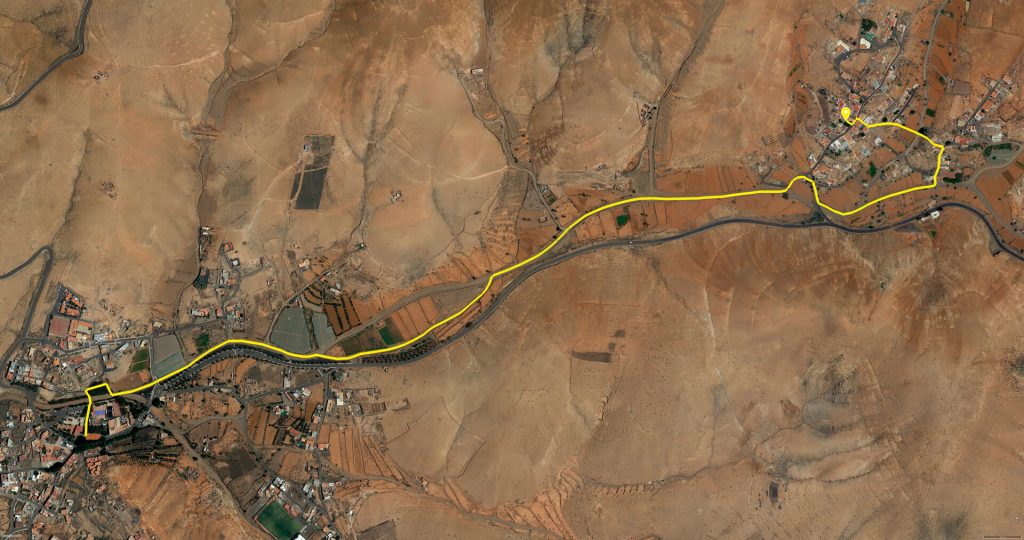
You are at the beginning of the yellow route between Toto and Pájara, where you can learn about the history of this settlement.
As you can see, this route begins in the Plaza de la Constitución, next to the Hermitage of San Antonio. This hermitage, built in the second half of the 18th century, has been declared an Asset of Cultural Interest in the monument category, not only for its characteristics but also for its relationship with its surroundings.
It is located in the centre of this beautiful village, which is surprising, as hermitages used to be built further away from the village centres. For a time, it also served as a meeting place for local residents.
At that time, the great majority of hermitages were built thanks to the contributions of the people and wealthy families, with the contribution from a resident of Betancuria, Doña Ana Cabrera, being particularly noteworthy in the construction of this hermitage. Later, in 1795, the chapel was finished and roofed thanks to Pedro Acosta, a talented carpenter.
The route starts in the direction of the sports field via Calle El Hornero, Calle Tindaya and Calle Pozo de la Araña. Here you can see old houses belonging to the picturesque settlement of Toto, which dates back to pre-Hispanic times in the Canary Islands.
The area is known to have been inhabited by the island’s ancient settlers, the Maho aborigines, who were mainly involved in livestock farming and agriculture. Using the ‘flora majorera’, they obtained the wood they needed to make their tools from the tarajales and acebuches.
With the arrival of the conquistadors in the 15th century, the island of Fuerteventura was incorporated into the Crown of Castile and colonisation of the island began. During this period, Toto stood out not only for its water wealth but also for its land, serving as a storehouse of wheat for the island, which was given to the most disadvantaged families.
In the mid-twentieth century, economic activity in Toto declined. However, in recent decades the area has become a popular tourist destination due to its natural beauty and peaceful surroundings.
The route continues via Calle Amanay to Barranco del Cortijo in the direction of Pájara. Here we continue along the Barranco de Toto ravine until we reach the church of Nuestra Señora de Regla, in Pájara.